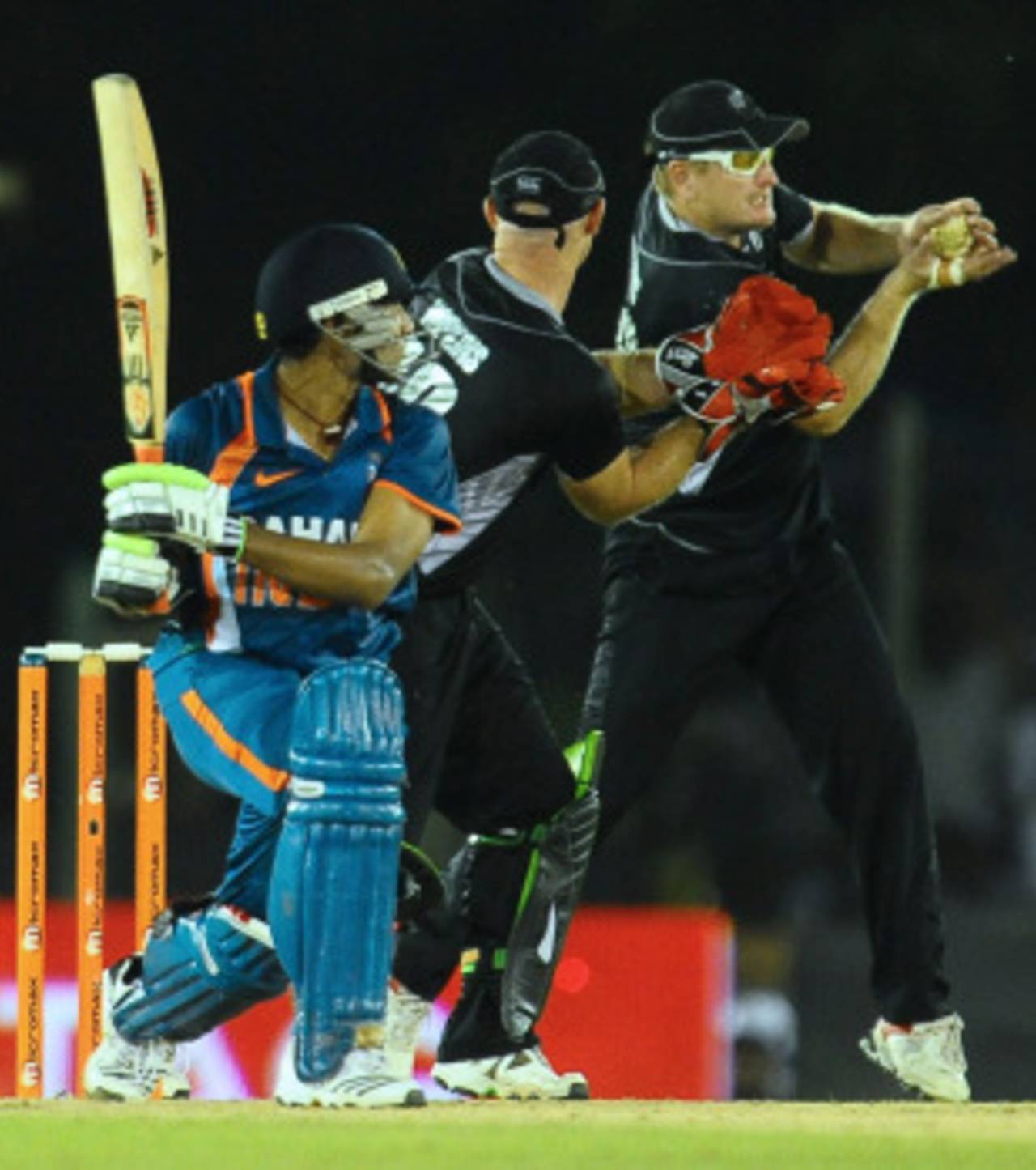India undone by 'spongy' bounce
Every now and then the Indian batting is tested in difficult one-day conditions, and they usually tend to come up short, though not as spectacularly as against New Zealand in the opening match of the tri-series
Siddarth Ravindran in Dambulla
11-Aug-2010

Ravindra Jadeja was one of several Indian batsmen caught at slip • AFP
Every now and then the Indian batting is tested in difficult one-day conditions, and they usually tend to come up short, though not as spectacularly as against New Zealand in the opening match of the tri-series. Last year, they batted first on a damp pitch in Guwahati and were sliced to 27 for 5 by Mitchell Johnson and Doug Bollinger before Praveen Kumar and Ravindra Jadeja partially revived India with half-centuries. There was no lower-order rescue on Monday, and India slid to the lowest total in ODIs this year.
There wasn't the exaggerated movement which worked so well for India in the Asia Cup final, but the bounce and slowness of the track proved too much. MS Dhoni explained that while the pacy short ball has troubled some of the Indian batsmen, it was not what they were up against in Dambulla.
"This is completely different bounce, it is very spongy, bowlers are bowling 125-126 and the keeper is standing where he usually does for Shoaib Akhtar," Dhoni said. "You can't really drive off the backfoot, the only option is to cut and pull, and if the bowler doesn't give room, it is very difficult to score."
There were no magic deliveries from New Zealand to warrant such a limp display. All Daryl Tuffey and Kyle Mills did was keep the ball a touch short and maintain tight lines, which was enough to coax India's batsmen to give the New Zealand slip cordon a thorough workout. Rohit Sharma opened the face to steer to slip, Suresh Raina attempted a cover drive away from his body to edge to slip, Yuvraj Singh fished outside off to nick it to slip.
"Players in the subcontinent generally don't like the ball anywhere above the waist," Scott Styris said. "Not because they are scared but because it is different compared to the usual subcontinental wicket. This has lot more bounce and we learnt that during the practice sessions. We really wanted to put some short balls in there."
Styris had played a big role in New Zealand recovering from a top-order collapse, his 190-run partnership with Ross Taylor effectively putting the match beyond India. Dhoni was unhappy about the mistakes in the field that allowed New Zealand to reach such a commanding total. "There were a couple of missed chances, Styris missed stumping [when he was on 16], Ross Taylor's dropped catch [on 45 by Suresh Raina], still if we had got both of them they still would have got at least 200 which the way they bowled would have been very difficult to chase."
New Zealand packed their side with quick bowlers, a strategy which worked well for them, but India were left with only two quick bowlers for much of the innings after Abhimanyu Mithun's heat stroke. While the new-ball bowlers, Praveen Kumar and Ashish Nehra, took 7 for 90 between them, India's spinners were caned for 161 runs in 26 overs. "We had four fast bowlers and they had three. That was the difference," Styris said. "We knew that they didn't have reserves."
Siddarth Ravindran is a sub-editor at Cricinfo